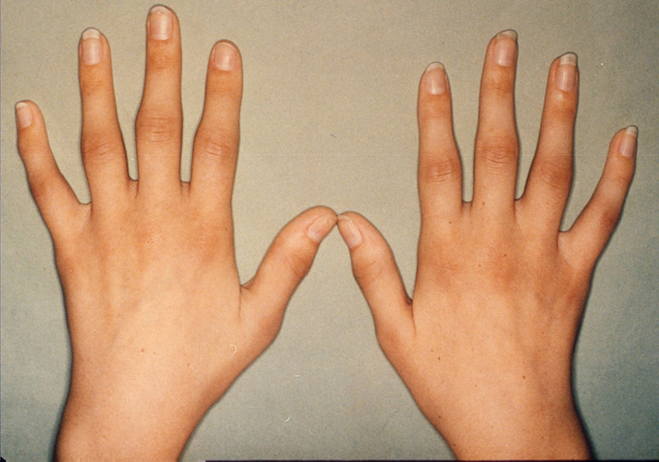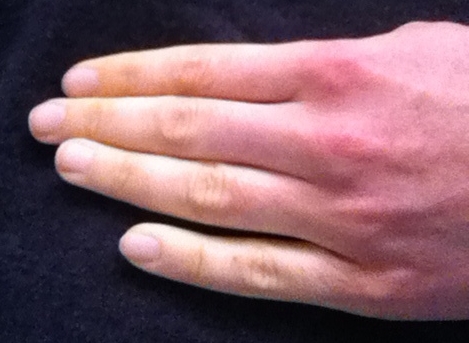Polyarthritis is any of the arthritis type in which four/five or more joints are affected at the same time. It is mostly associated with autoimmune conditions and may occur at any age in person of any gender.
Many possible causes could be there for disease but symptoms may vary from person to person.
Polyarthritis can be acute or chronic and may last for over six weeks. Several viral infections may occur and it may develop into a particular type of autoimmune disease. However, it subsides or heals in most cases and doesn’t come back.
Know about its different forms, associated conditions, causes, risk factors, symptoms, diagnosis and treatment.
Different Forms of Polyarthritis

The various forms of polyarthritis include:
- Polyarticular JIA
Classified as juvenile idiopathic arthritis or JIA, polyarticular JIA affects the joints in children and teens. It can lead to very painful swelling in small and large joints such as wrists, ankles, knees and hips. It may even occur in neck and jaw areas. Its cause is not always known but it improves over time and with proper treatment.
- Lupus
Apart from affecting a person's joints, lupus is a form of polyarthritis that often affects the skin, kidneys and the central nervous system also.
- Psoriatic arthritis
Psoriatic arthritis can be take place in people with skin condition called psoriasis. In some cases, arthritis develops first.
Associated Conditions

Some conditions can occur along with polyarthritis or indicate that there is another problem. They include:
-
Fibromyalgia: This condition affects the whole body, causing pain and fatigue in multiple areas including the muscles.
-
Dupuytren's contracture: When the connective tissue in the hand contracts to become stiff, any one of the fingers may curl into the palm.
-
Hemochromatosis: If the body stores a much more iron than it uses, the iron buildup can cause development of polyarthritis.
-
Raynaud's disease: Poor blood circulation in the hands and feet occurs in this condition. The fingers can sometimes turn white at the ends, deep red or purple.
-
Inflammatory bowel disease (IBD) : IBD like ulcerative colitis and Crohn's disease can lead to inflammation in the small intestine and colon.
Polyarthritis can also be associated with joint swelling, pain and bilateral edema in lower limbs. In some cases, a previous history of inflammatory joint problems and bilateral edema of lower limbs can be there.
A condition called Alphavirus Polyarthritis Syndrome has an incubation period of 3–21 days, depending on the specific virus. A gradual or sudden onset of fever, arthralgias, headache, and lymphadenitis and conjunctivitis may also occur in some forms. A maculopapular rash may cause 4 to 8 days post symptom onset and it may be accompanied by higher fever. The joint pains related to this condition may keep coming back for several months after initial illness for up to one year.
Causes
Polyarthritis is usually caused by an autoimmune disorder like rheumatoid arthritis (RA), lupus erythematosus, psoriatic arthritis, and amyloidosis. But it can also be caused by infection due to an alphavirus and this condition is known as alphavirus polyarthritis syndrome. Sindbis virus is one of the most distributed alphaviruses that causes polyarthritis.
The many causes for polyarthritis include Still’s disease, cancer, rheumatoid arthritis (RA), Whipple’s disease, Ross River virus, sarcoidosis, lupus, chikungunya virus, Parvovirus and gout.
Polyarthritis can be either seropositive or seronegative. Rubella and mumps virus also activate the immune system and trigger an inflammatory reaction that may result in polyarthritis.
Risk Factors
The risk factors of polyarthritis include:
-
Age: The older people are more vulnerable to developing the condition rather than young people.
-
Gender: Though gender is not really a matter, women can be at a higher risk than men.
-
Genetics: Having certain genes can increase the risk of developing polyarthritis.
-
Lifestyle: Smoking, high caffeine intake and alcohol consumption can make someone more susceptible to developing polyarthritis.
-
Past experiences: If a child is exposed to factors like parents with the habit of smoking, the risk of developing polyarthritis may increase later in life.
Symptoms

The symptoms of polyarthritis can be similar to those of rheumatoid arthritis (RA). They can develop in the body gradually or can have a sudden onset. Some common symptoms include:
- Stiffness
- Pain
- Scaly, red rash
- Sweating
- Tiredness or a lack of energy
- Loss of appetite
- Swelling or redness in the affected area
- High temperature of 100.4 ºF (38 ºC) or above
- Unexpected weight loss
- Fingers and toes swelling into a "sausage shape" on one side of the body
Diagnosis

Check with your doctor for any joint pain or swelling. The doctors will typically describe the joint symptoms as polyarthritis if arthritis symptoms are in more than four/five joints.
Your doctor will enquire about your medical history and carry out a physical examination. Blood tests and X-rays or ultrasound of the joints may be recommended.
Tenderness, swelling, sore throat (pharyngitis), rashes, skin nodules, inflamed joints and other symptoms may be checked by a doctor. Whether the pain is symmetric or asymmetric, that will also be checked. While people having RA usually experience symptoms on either sides, those with psoriatic arthritis often have asymmetrical symptoms.
Polyarthritis Treatment

Though there’s no cure for polyarthritis, it involves symptom management and reducing inflammation. Diet, exercise, lifestyle changes and medication help in relieving the pain and other symptoms.
The medications recommended by doctor to decrease pain include:
-
Nonsteroidal anti-inflammatory drugs (NSAIDs): These drugs that include ibuprofen, diclofenac and naproxen help reduce stiffness and inflammation and relieve pain by blocking enzymes and proteins that contribute to inflammation.
-
Corticosteroids: These drugs lower inflammation by suppressing the immune response. They are especially effective if you have polyarthritis due to an autoimmune disease.
-
Hydroxychloroquine: This is a mild immune modulator drug that reduces inflammation.
-
Disease-modifying antirheumatic drugs (DMARDs): These drugs also suppress the immune system. They slow down the disease and commonly used methotrexate reduce joint damage.
-
Anti-TNF drugs: These drugs control inflammation and are used if DMARDs are not effective enough in treating pain due to rheumatoid arthritis or Still’s disease.
-
Over-the-counter medications: Topical medications can help in relieving symptoms and can be bought from a local drug store.
-
Painkillers: These include over-the-counter drugs like acetaminophen.
-
Biological therapies: These drugs slow down the developing polyarthritis. Some common drugs include infliximab and etanercept.
Apart from these medications, non-medical treatment would include exercise, diet and lifestyle management. An exercise plan should be created with the help of a physiotherapist or exercise specialist. Swimming, walking, cycling stretching and other forms of low-impact exercises can help treat symptoms of polyarthritis. Warm baths may also be effective in managing pain caused due to arthritis. Physiotherapy or workout which has a gentle impact on the joints can help.
Image Source:
1) cloudfront
2) squarespace
3) medicalnewstoday
4) india
5) stylecraze

